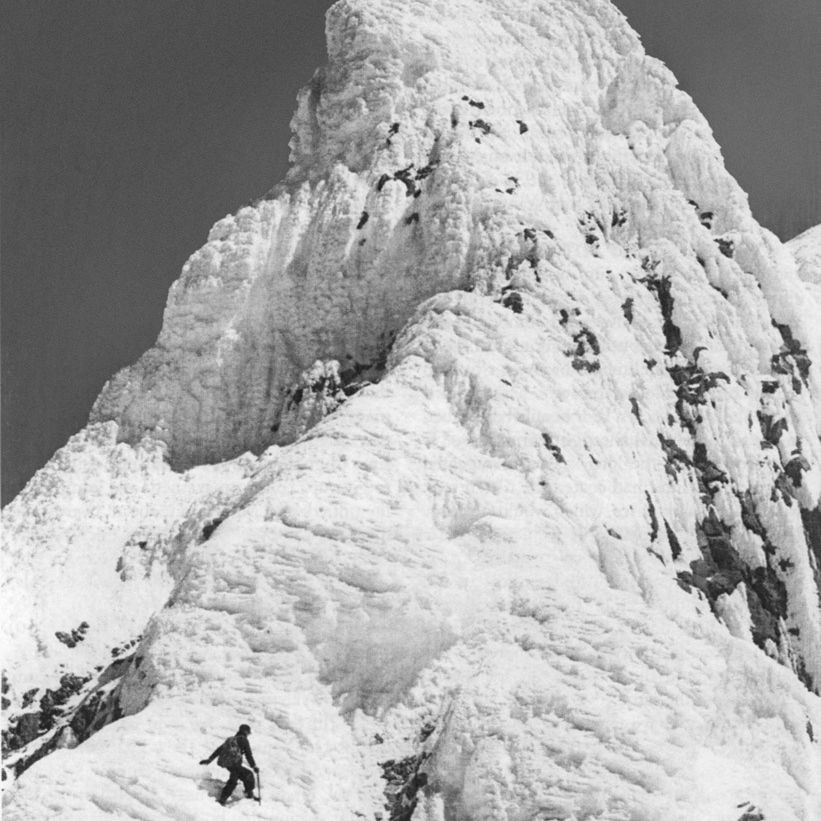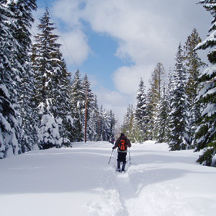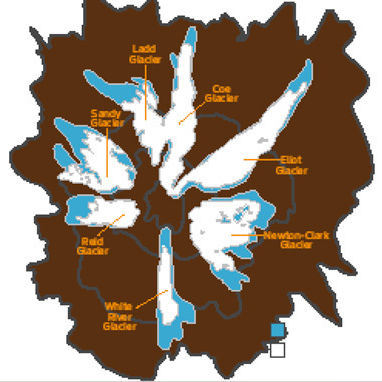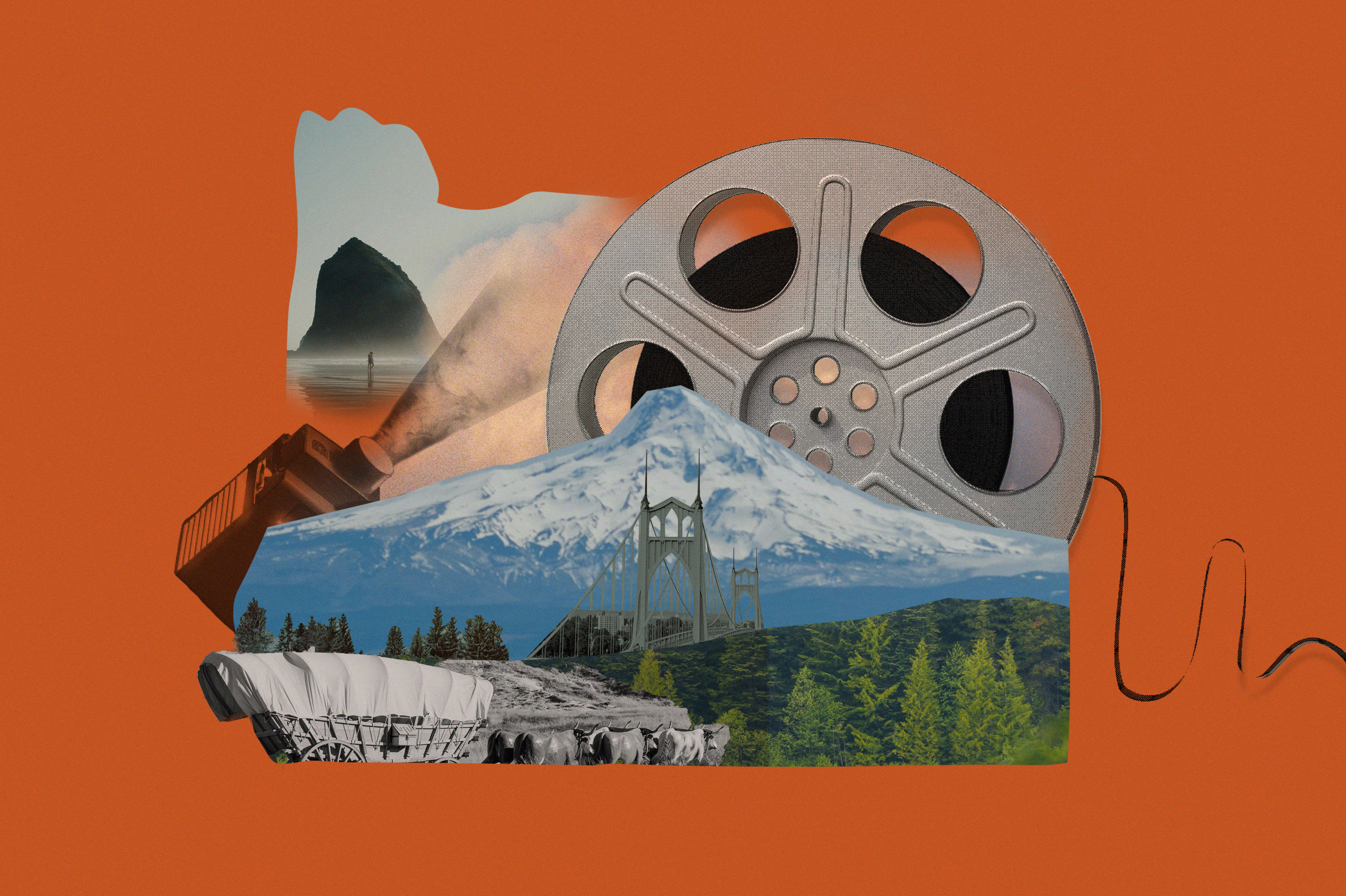The Inside Track at Mt. Hood Meadows
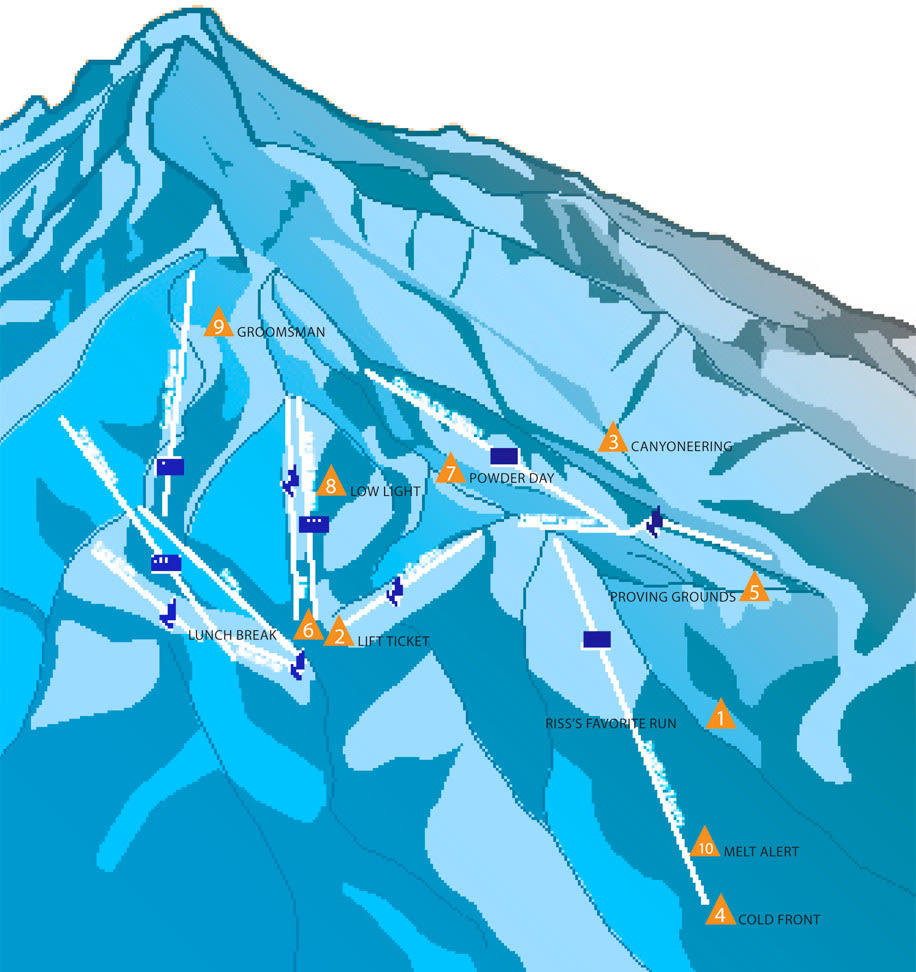
Image: Jessica Keirn
Huge bowls, rugged backcountry canyons, an army of snowcats grooming pitch-perfect runs—all blanketed under more than 400 inches of powder a year. Welcome to Mt Hood Meadows. With terrain this good, you can’t afford to stand around gaping, wondering where to go. You need a plan. So we tapped Jeremy Riss, the mountain’s ski-school manager, for some solid advice on our local volcano’s biggest ski area. Consider the following a just-between-us cheat sheet to your best day on the hill.
1. RISS’S FAVORITE RUN Lord’s Chute: a narrow, 40- to 45-degree, fir-lined gash that holds deep snow. It’s located skier’s right of God’s Wall. Get there by entering the last control gate to the skier’s left of Park Place terrain park. Traverse skier’s right until you reach the rocky outcropping above the Heather Canyon Runout.
2. LIFT TICKET On busy days, lines at the Mt Hood Express can run 40 people deep. But if the Stadium lift, a creaky two-seater, is running, you can bypass the traffic jam and either attack hidden runs in Private Reserve or drop down long, arcing, groomed paths like Tamarack to the Hood River Express lift.
3. CANYONEERING Once ski patrol gives the green light to venture into the double-diamond terrain of Heather Canyon (usually by 11 a.m.), plunge down marquee shots like A-Zone and Silver Bowl. Then stick skier’s left and aim for the large clump of trees on the ridge. Here (after a few minutes of hiking), you can survey Clark Canyon and find Accordion Bowl, a steep, seldom-skied face bordered by outstanding tree skiing.
4. COLD FRONT When storms howl, exposed ridge-runs like Catacombs, Texas Trail, and Boulevard become wind-scoured skating rinks, and the ride up Cascade Express—if it’s open—feels like a meat locker. If frostbite isn’t on your agenda, head toward the wind-sheltered Hood River Express chair (affectionately called “Herm,” after the nearby Hood River Meadows parking lot), where temps can be 10 to 15 degrees warmer.
5. PROVING GROUNDS S&R Cliffs, a remote section of glades at the base of Heather Canyon, opened just last year. Technical tree runs, snow-loaded gullies, burly near-vertical terrain, and cliff drops are the norm. Take note: runs here end with a long, flat ski (especially challenging for boarders) on the trail back to the Herm chair. But, as Riss says, “That means a lot less people track it out.”
6. LUNCH BREAK Come noon, the main lodge’s cafeteria is full up with ravenous skiers. Sidestep the mob by darting upstairs to Cantina for oversize nachos and meaty tacos. Skiers on the move can drop into Renaissance Café at the base of the Herm lift and pick up fresh turkey sandwiches.
7. POWDER DAY The big, pillowy, snow-swollen slopes visible from the Mt Hood Express lift—1 Bowl, 2 Bowl, 3 Bowl, 4 Bowl, 5 Bowl—are a siren for powder hounds. But unless you grab first chair, expect those bowls to be plundered before your butt leaves the lift. A better shot at scoring untracked snow lies down Tillicum Trail. This rolling, groomed trail accesses less-trafficked (but just as worthy) targets like O Ring, 3-D, and Rock Garden. An added bonus: these north-facing slopes stay shaded from the sun, keeping the snow nice and fluffy.
8. LOW LIGHT Fighting pea-soup fog is just part of the Northwest skiing experience. But the well-spaced pines constituting the Jefferson Glade offer some much-needed contrast during a whiteout. For a more challenging run, experts can hunt for looked-over powder inside the Fright Trees (aka “Far Right”), a steep pitch located skier’s right of the Herm lift.
9. GROOMSMAN From the Cascade Express lift, hit Arena. A long, moderately steep pitch, this is the spot for intermediate skiers to rip wide-open, arching S-turns on a nicely groomed trail. Link it up with Ridge Run and take a hard left on Beaver Tail (both blues), and you can shoot nearly 2,000 vertical feet to the base area.
10. MELT ALERT Check the thermometer before setting off down HRM Face and Willow. The low altitude (about 5,000 feet) means that on warm days, the snow in this mellow, designated slow zone can quickly turn into ski-snarling mush.
